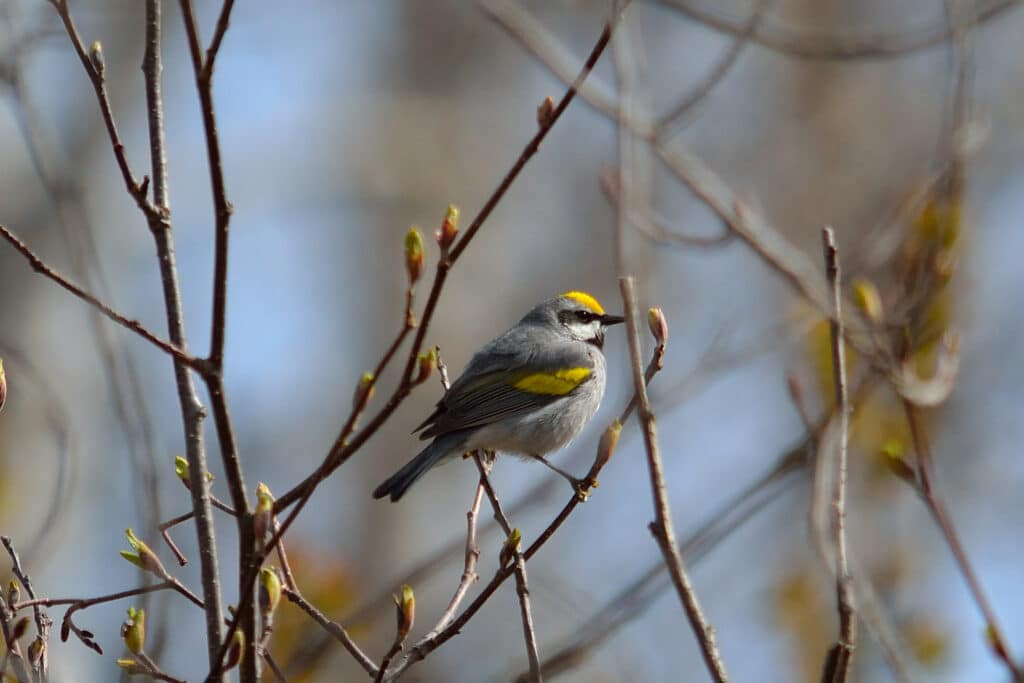
A new study from the University of Minnesota-Duluth and partners could help loggers and land managers protect essential wildlife habitat when conducting timber harvest. The research examined variations in logging practices to see what had the most benefits for birds and small mammals.
In a paper published in the journal Forest Ecology and Management in June, researchers shared results of their multi-year study of four forest plots in northern Minnesota.
Dr. Alexis Grinde of UMD’s Natural Resources Research Institute (NRRI) and her colleagues set out to provide science that can help timber companies and regulators leave the best post-logging landscape possible. The study was funded by the Environment and Natural Resources Trust Fund as recommended by the Legislative-Citizen Commission on Minnesota Resources.
When many areas are logged in Minnesota, the operators leave behind standing trees to offer places for animals to eat, hide, nest, and more. It’s part of a trend in forest management that intends to leave logged forests somewhat like after a natural disturbance, such as a fire or windstorm.
“Many agencies and organizations have adopted policies to increase and maintain the ecological and structural complexity of stands during forest management activities with considerable focus on providing benefits for wildlife,” the paper says.
Loggers can also leave behind woody debris — branches, tree tops, and other material that isn’t marketable. This “slash” can provide more habitat for insects, small mammals, and birds, but it’s also in growing demand as renewable fuel for energy production.
The scientists chose forest plots that had been harvested about eight years earlier and were growing back into a forest. They visited the sites during breeding seasons to count the number of creatures, and how many species were represented. In addition to NRRI, the project included the Minnesota Forest Resources Council, University of Vermont, and the USDA Forest Service’s Northern Research Station.
The study focused on birds and small mammals, like voles, mice, and squirrels. Those two groups are important to healthy forest ecosystem function, and are often affected by timber harvest. The most common bird species they observed were chestnut-sided warbler, veery, golden-winged warbler, red-eyed vireo, and white-throated sparrow.

One key question was about the two primary ways loggers leave standing trees in their harvest areas. Guidelines currently suggest either living single trees scattered around the site, or clumps of trees close together. But it’s never been clear if one method is better than the other.
What is obvious is that leaving a few live trees in a logged area is far better than a pure clear-cut.
“Bird community metrics responses showed a clear and consistent positive response to tree retention treatments; tree retention treatments resulted in higher total abundance, increased diversity, and higher species richness compared to stands with no tree retention,” the authors wrote.
Similar correlation was observed with more small mammals in areas with tree retention than clear-cuts.
But there was not a significant difference between the two retention methods, clumps or individuals. Some birds showed up in one type, while others in the other type, and some showed up in both. The authors point out that clumps do have other benefits, such as being more resistant to blowdown in windstorms, and more efficient logging operations. Meanwhile, the researchers only found flying squirrels in “clumps” of standing trees, while short-tailed weasels were only found in areas with individual standing trees.
The researchers found bird species that prefer early successional forests, like young aspen stands, were still present at sites where mature trees were retained. That was contrary to some hypotheses.
Continuing research on the topic could help protect some vulnerable species. One of the most common species found in the study plots was the golden-winged warbler, a threatened species that has found a stronghold in Minnesota. About half the bird’s remaining population, which has declined more than 60 percent since the 1960s, breeds in the state.
Most of the golden-winged warblers decline has been attributed to habitat loss in its breeding territory, along its migration route, and in its winter home in Nicaragua and Costa Rica. Understanding how to best preserve habitat is key for protecting the species. Golden-winged warblers were most often found in the harvested stands where individual trees were left standing.
The scientists say the study was limited by some circumstances, and raised questions as much as it answered them. The amount of biomass left at the sites was higher than average, the scientists didn’t look at factors like how many nests successfully fledged young, and how those juveniles fared after leaving the nest, and the study was only conducted in a specific period after logging. The benefits or negatives for wildlife might shift over time as the forest regrows.
But it also laid to rest a few questions, and furthered the advancement of understanding issues regarding timber harvest and wildlife.
“The results of our study provide important evidence for the continued benefits tree retention provides for wildlife seven and eight years post-harvest in regenerating aspen forests,” the authors wrote.
More information:
- Grinde, A. R., Slesak, R. A., D’Amato, A. W., & Palik, B. P. (2020). Effects of tree retention and woody biomass removal on bird and small mammal communities. Forest Ecology and Management, 465, [118090].
- Harvest guidelines leave land managers stumped – NRRI

